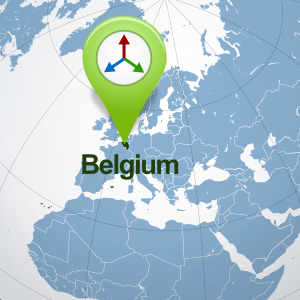WAMSTER for offshore MOG
For the last 10 years STERPMU devices have been used GPRS communication because of good coverage in remote and sparsely populated areas. Although 2G and 3G technology is phasing out in many countries especially in Asia, 2G still provides a good coverage in rarely populated areas suitable for renewable generation facilities. Difficulties arise at locations where new base stations that support only LTE technology are being introduced.
Elia’s first off shore project MOG (Modular Offshore Grid) was the first case that we experienced such constraint. The initial request for monitoring at location 40 km off the coast was received from Elia Grid International at the end of 2019. An evaluation 4G module was delivered to Elia in March 2020 for a proof-of-concept evaluation. After a positive evaluation of STERPMU performance in the new environment, a new LTE communication module has begun.
STERLink module
A new STERLink module comprising 4G and Ethernet communication and improved GNSS timing was developed in a few months. The module acts as multi-constellation (GPS, GNSS, Galileo) time synchronisation source with an improved hold-over stability. Another huge advance compared to the standard STERPMU set is an Ethernet communication. The STERLink module is equipped with RJ-45 Ethernet port that allows simultaneous connections to four IEEE C37.118 compliant PDC servers in parallel to communication to WAMSTER web PDC over 4G. Moreover, in rare situations where absolutely no mobile internet coverage exists, communication to WAMSTER PDC can be routed to internet through wired Ethernet link.
In December 2020 STERPMU equipped with STERLink module was installed at Elia’s MOG switchyard. An update: since January 2021, three STERPMUs has been installed at MOG: two on 220 kV lines pooling power from windfarms and one on a 220 kV subsea cable to Stevin substation.

.png)
.png)